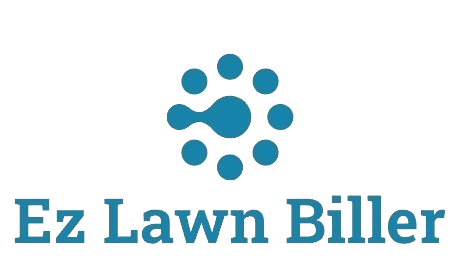Lawn care professionals often struggle with setting the right pricing for their services. This blog post will discuss pricing best practices to help you thrive in a competitive market.
Set Pricing Best Practices for Lawn Care Pros
Setting the right prices for lawn care services can be a challenge for many professionals in the industry. With various factors to consider, including operational costs, competition, and customer expectations, it’s crucial to develop a pricing strategy that aligns with your business goals and market dynamics. This article will explore effective pricing best practices for lawn care pros, offering insights, strategies, and tools to ensure that your services are both profitable and competitive.
In today’s competitive lawn care market, understanding how to price your services effectively can make all the difference. Many owners find themselves overwhelmed with pricing models, competitor rates, and client expectations. This blog post aims to demystify the pricing process, offering clarity on how to create a pricing strategy that reflects the value of your services while also meeting market demands.
We will discuss key components of pricing strategies, provide actionable insights on calculating your costs, and highlight the importance of market research. Additionally, we will explore how software solutions, like EZ Lawn Biller, can simplify the billing process and help you manage your pricing strategies more effectively.
Understanding Your Costs
The first step in setting prices for your lawn care services is understanding your costs. This includes direct costs, such as labor, equipment, and materials, as well as indirect costs like insurance, marketing, and overhead. Accurately calculating these costs ensures that your pricing covers your expenses and allows for a profit margin.
To break this down, start by making a detailed list of all the expenses associated with running your lawn care business. For instance, if you spend $500 on equipment maintenance and $300 on fuel each month, these costs should be factored into your pricing. Remember to include labor costs, even if you are a solo operator, as your time has a value that must be accounted for.
Next, consider the pricing models that best fit your business. Some common models include hourly rates, flat fees per service, or subscription-based pricing for ongoing maintenance. Each model has its pros and cons, so think about what aligns best with your service offerings and customer needs.
Researching the Competition
Another critical aspect of setting your pricing is understanding what your competitors are charging. Conduct thorough market research to identify the price range for similar services in your area. This will give you a benchmark to work from and help ensure your prices are competitive.
Take the time to analyze your competitors’ pricing strategies. Look at their website or reach out to them for quotes to gather intelligence on their service offerings and pricing structures. Categories to focus on include standard lawn mowing, fertilization services, and specialized treatments. Understanding what others charge can help you position your prices effectively within the market.
However, don’t just copy your competitors’ prices. Instead, use this information to inform your pricing strategy while considering your unique selling points. If you have more experience, higher-quality services, or specialized equipment, you may justify higher rates. Conversely, if you are new to the industry, you might want to start with lower prices to attract clients.
Establishing Your Value Proposition
Once you understand your costs and have researched the competition, it’s essential to establish a value proposition that clearly communicates the benefits of your services. Your pricing should reflect the value you provide to customers. For example, if you offer organic fertilization or eco-friendly practices, you can set higher prices based on the unique benefits your services deliver.
Highlighting your expertise and any certifications you have acquired can also bolster your credibility and justify your pricing structure. Show potential clients that you are not just another lawn care provider, but rather a knowledgeable expert who offers great value for their investment.
Additionally, consider bundling services or offering tiered pricing packages. This not only provides clients with options but can also increase the perceived value of what you offer. For instance, you could create a basic package for mowing and a premium package that includes fertilization and weed control. This approach can help you appeal to a broader range of customers.
Utilizing Software for Efficient Billing
As a lawn care professional, managing invoices and billing can consume a significant amount of your time. This is where software solutions like [Lawn Biller Software](https://ezlawnbiller.com/) come into play. EZ Lawn Biller simplifies the billing process, allowing you to focus more on delivering quality lawn care rather than getting bogged down in paperwork.
With features such as automated billing and customizable invoices, EZ Lawn Biller ensures that your pricing strategies are executed smoothly. You can set recurring billing schedules for clients who require ongoing services, ensuring timely payments without the hassle of manual tracking.
Moreover, the ability to generate detailed reports can help you analyze your revenue streams and adjust your pricing strategies as needed. By keeping track of your performance, you can make data-driven decisions to enhance profitability over time.
Communicating with Clients
Clear communication with your clients is crucial when it comes to pricing. Ensure you are transparent about your pricing structure, and be prepared to explain what goes into your rates. Clients appreciate understanding how you arrived at your pricing, and knowing the rationale can help them feel more comfortable with your charges.
Establishing trust through open communication can lead to long-term client relationships. If you’re adjusting your prices, whether due to increased costs or enhanced service offerings, inform your clients ahead of time. Providing a rationale for price changes can prevent misunderstandings and maintain goodwill.
Additionally, consider soliciting feedback from your clients regarding your pricing. Their insights can offer valuable information about perceived value and help you refine your pricing strategy accordingly. A client who feels like they are getting value for their money is more likely to become a repeat customer.
Adjusting Prices Over Time
Pricing isn’t a one-and-done deal; it requires ongoing assessment and adjustment. As your business grows, costs might change, and so might the competition. Regularly review your pricing structure to ensure it aligns with market conditions and your operational costs.
Economic factors, such as inflation or changes in supply chains, can also impact your pricing. Stay informed about market trends and be ready to adapt. For example, if fuel prices rise significantly, it may be necessary to adjust your rates to maintain profitability.
Additionally, consider seasonal adjustments to your pricing. In peak seasons, when demand is higher, you might be able to charge more for your services. Conversely, during slower months, consider promotional rates or discounts to attract new clients.
Leveraging Customer Feedback
Don’t underestimate the power of customer feedback when it comes to your pricing strategy. Regularly soliciting input from clients can provide invaluable insights. Use surveys or direct communication to gauge their perception of your pricing and services.
Understanding how your customers perceive your value can help you make informed decisions about price adjustments. If many clients feel your services are worth a higher price, it might be time to consider increasing your rates. On the flip side, if many clients express concerns about affordability, it may be time to reevaluate your pricing strategy.
Moreover, leveraging testimonials and case studies can boost your credibility and justify your pricing. Happy clients are often willing to share their experiences, which can serve as powerful marketing tools that reinforce the value of your services.
Conclusion
Setting pricing for lawn care services is a multifaceted process that requires careful consideration of costs, competition, communication, and ongoing assessment. By understanding your costs and establishing a strong value proposition, you can create a pricing strategy that benefits both your business and your clients.
Utilizing tools like [Lawn Biller Software](https://ezlawnbiller.com/) can streamline your billing process, allowing you to focus on what matters most—providing exceptional lawn care services. Remember, pricing is not static. Be proactive in adjusting your rates as needed and stay attuned to market dynamics.
As you refine your pricing strategies, you will not only enhance your profitability but also build stronger relationships with your clients through transparency and responsiveness. Embrace these best practices and watch your lawn care business thrive.




